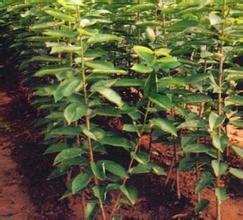Cultivation methods of dwarfing cherry seedlings

Cherry trees are tall and are not suitable for growing in greenhouses; natural production takes 5 to 6 years to bear fruit, and it takes 10 years to enter the high yield period, with a long investment return period and high management costs. After many years of exploration, fruit experts in China have developed a cherry variety grafted with cherry as rootstock and FL-80 plum as interstock, which has the advantages of early fruiting, high yield, stable yield, disease resistance and dwarfing tree body, which provides a favorable basis for protected cultivation and container cultivation of cherry. Rootstock selection: cherry (also known as wild cherry) root system is the preferred root system, because it has the advantages of resistance to underground pests biting, strong cold resistance, strong drought resistance, strong acid and alkali resistance, resistance to fertilizer damage, fertilizer resistance, developed root system, etc. The root systems of wild apricot and wild peach can also be adopted. The two root systems have poor waterlogging tolerance and are only suitable for cultivation in waterlogged plots. The above three root systems are better than Shandong sakura, Isatis indigotica, Benxi sakura and Kote, which completely solves the problem of serious dead trees caused by poor root systems. Seedling grafting: seed of cherry is sown in spring. In August to September of the same year, cherry is used as the base stock, and the scion of plums of the same year with the same thickness as the base stock is grafted at 2~4 cm on the ground of the base stock. The best effect is obtained by T-shaped bud grafting. Every 6 to 7 months, i.e. March to April of the second year, the rootstock is cut at 0.5 to 1 cm above the joint part between the plum bud and the basal stock, and the binding rope of the bud is removed, and then the new sprout of the basal stock is wiped off at any time. From June to July of the same year, cherry scions with the same thickness as the interstock were grafted on the interstock by bud grafting with plum buds as the interstock. The bud should be 2~3 cm away from the upper end of the joint between the intermediate stock and the base stock, and retain a certain length of the intermediate stock, cut off the rest. When the cherry bud grows to 14~16 cm, cut the intermediate stock at the position 0.5~1.5 cm away from the upper end of the joint of the cherry bud and the intermediate stock, and untie the binding rope of the cherry bud. At this time, the grafting of the whole dwarf cherry seedlings is completed, and then fertilization and pesticide application are carried out until the nursery is out in early November.
- Prev

Planting period and method of Cherry in Spring
At present, the main tree shapes in cherry protected area production are natural happy shape, improved trunk shape, trunk sparse layer shape and slender spindle shape. The natural happy trunk is 30-40 cm high, with 3-5 main branches, 6-7 lateral branches on each main branch, and the angle between the main branch and the trunk is 30-45 degrees. The height of the tree is controlled at 1.5 to 1.8 meters.
- Next

Control methods of mango weevil
1. Mango leaf-cut weevil is widely distributed, adults feed on mango tender leaves, causing the leaves to dry up, or females lay eggs on the tender leaves and bite off the tender leaves from the base, affecting plant growth. Control method: during the tender shoot growth period, ① picked up the fallen leaves of the injured plants every 3 days, dried them in the sun and burned them, killing young plants.
Related
- Moge, come on! The staff of the peasant association in the producing area of cantaloupe were frightened when the crowd gathered.
- Causes and Solutions of low Fruit setting rate of Apple
- Symptoms and control measures of passion fruit virus disease
- Fruit growing lesson: how do apple orchards keep high yields?
- Can you build orchards in the mountains? What are the pros and cons?
- How to manage the coloring period of Crisson grape?
- This paper introduces the processing technology of two kinds of fig products.
- How much is a month for retired teachers in rural areas by 2020?
- How can strawberry planting increase sugar content? We should pay attention to management in many aspects.
- What are the cultivation techniques on how to improve the yield of golden fruit?

